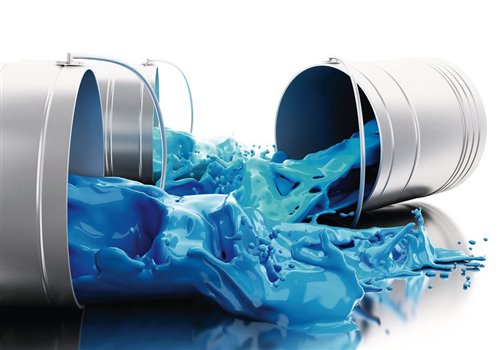Polymers is one of the most widely used resins in a wide range of industries. Predictions show that its global consumption will reach to 400 million tons annually. This resin generally results from esterification reaction of alcohols with polyvalent acids in an acidic environment. The formation rate of the ester structure in reaction depends on various factors such as activity of the functional groups, solubility of reactants, the reaction temperature, functional groups’ concentration, presence of catalyst, and the water removal efficiency. There are two type of polyesters: saturated and unsaturated. They differ in terms of their chemical structure (i.e., the presence or absence of a double bond in the final structure). Unsaturated polyester resin is one of the most important thermoset resins in industry, which has significant advantages such as curability at ambient temperature, reasonable price, good mechanical properties, and transparency. Unlike other thermoset resins, it does not produce by-products during the curing process. Therefore, we can either mold or laminate it easily at low temperatures and pressures. It is widely used mainly in fiberglass industry, the covering industry, and in making stone putty and wood varnishes. The global market value of this resin in 1990 is estimated at 106 million dollars, which will apparently increase with the development of the aforementioned industries. Unsaturated polyester was first synthesized in USA in 1946 and used in fiberglass industry. Then its application expanded to other industries such as BMC and SMC.
Effect of Raw Materials on Production of Unsaturated Polyester Resin
Saturated and unsaturated glycols, unsaturated acids and anhydrides, improving acids and anhydrides, and crosslinking monomers are the raw materials used in production of unsaturated polyester resin. Quality of raw materials has a significant effect on the desired final properties of the resin. For example, hardness of the final polyester resin, which is an important feature for consumers, depends on crystallinity of the chemical structure. Any change in one of the raw materials to get a specific characteristic in the final resin will also change its other properties. In other words, producing a resin with standard characteristics and in accordance with customer's demands requires an engineering and precise work as well as experience and accurate calculations.
Gel Time
Gel time is one the parameters with significant impact on the final properties of unsaturated polyester resin after curing. This process can be slow or fast under the influence of inhibitor, catalyst and accelerator. Its time should be optimized, because too long curing time make the production time-consuming, slows down the production line, and ultimately impose financial losses on the producer. On the other hand, too fast curing process increases the stress on the resin and causes defects such as cracks or trapped bubbles in the resin bulk. Two catalyst and accelerator systems are used usually in this resin: 1) methyl ethyl ketone peroxide-cobalt naphthenate, and 2) benzoyl peroxide-dimethylaniline. If necessary, we can increase the gel time by using hydroquinone-based inhibitors. The polymerization process can be controlled by changing values corresponding to accelerator, catalyst and inhibitor, which may increase or decrease the gel time.
Types of Unsaturated Polyester Resins
Resin companies use the aforementioned methods to produce various unsaturated polyester with desired properties to meet the needs of market and consumers. The general classification of unsaturated polyester is presented below in brief:
- General purpose unsaturated polyesters
- Flexible unsaturated polyester
- Resistant unsaturated polyester
- Low shrinkage unsaturated polyester
- Weather-resistant unsaturated polyester (high resistance to ultraviolet rays)
- Chemical resistant unsaturated polyester
- Fire resistant unsaturated polyester
Conclusion
The increasing need of industry to composites and resins with acceptable resistance properties and reasonable price indicates that the consumption of unsaturated polyester will be increasingly in the next decade. In addition, ongoing research to improve their quality could increase demand for them more than expected.







